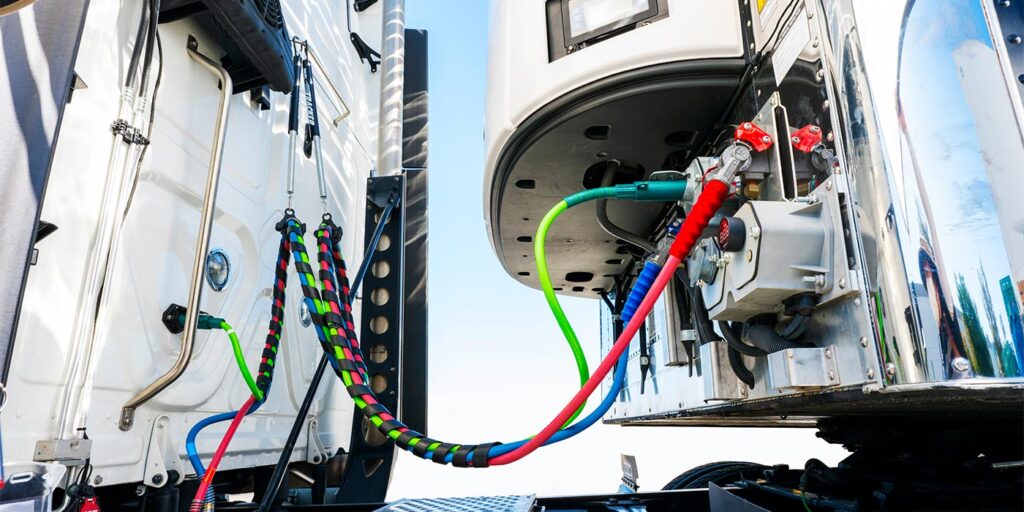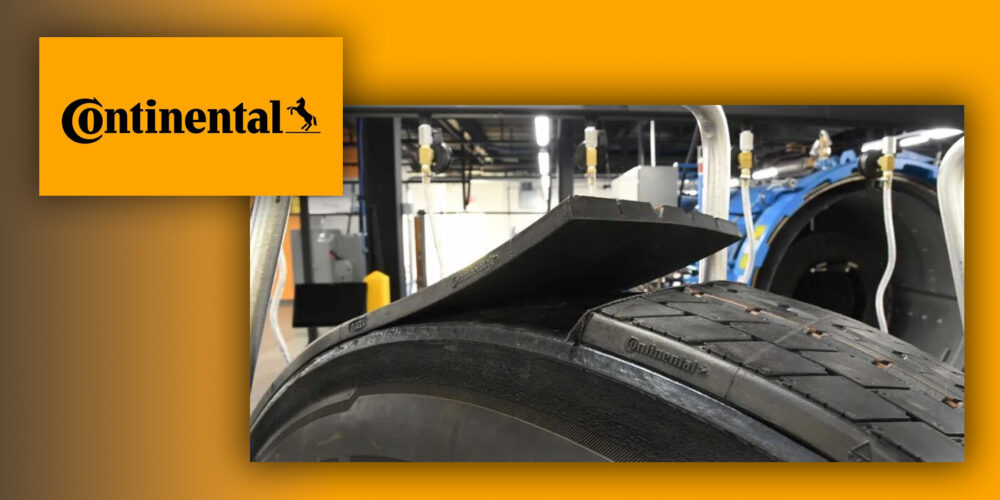As the industry is met with a rise in technological advancements and innovation, back-of-cab configuration of air and electrical trailer connections have been running on cruise control. Most fleets use what’s always worked and spend their energy figuring out the other stuff.
Over the last several years, however, accelerated product development and design for back-of-cab components are offering fleets more choices to change the dynamic of this product category. By taking it from a pure cost of doing business to an opportunity for ROI, fleets are simplifying installations and limiting service requirements at this critical junction on their truck and trailer combinations.
Hauling loads on time depends on this connection working properly with minimal downtime. And properly installing equipment like back-of-cab componentry can be time-consuming in a shop, and on-road repairs and replacements can eat up more time and money – time and money that could be used elsewhere.
A typical tractor-trailer has a minimum of three lines for connecting the tractor’s power and pneumatics to the trailer when the vehicle is in operation. While what a fleet specifies when ordering new trucks is its own prerogative, parts, such as quality cables and plugs, should be considered along with proper support for those cables. With a problem-solving approach, Phillips has been a big proponent of finding product solutions that work for a fleet to increase ROI in this area.
One of the initial changes in the industry in this product category has come with the switch from coiled to straight lines. Today about 70% of Phillips air and electrical line demand, for example, is satisfied with straight versions. While air and electrical lines come in both coiled and straight versions serving the same function, Phillips has learned that straight cables are more durable and resilient than their coiled counterparts. The drawbacks of coiled cables are that they are more prone to sag and drag on the deck plate and get tangled with one another, increasing the chances of kinks. Kinks in air lines are irreversible and restrict airflow. Coiled cables requiring frequent replacement increase downtime and CSA violations.
More recently, there has been a shift in the market to 3-IN-1 combination assemblies. Combination assemblies offer a unique take on cable protection. They combine straight rubber air lines and straight electrical cables into one protective unit combined in spiral wrap, avoiding tangles and providing abrasion protection. And although heavier in weight, using appropriate cable support that is installed properly keeps these lines off the deck plate, further diminishing the chance of damage and unscheduled downtime.
After the introduction and acceptance by the industry of 3-IN-1 combos, Phillips saw the next logical step to reduce the cost of back-of-cab components with an all-in-one Power Air Kit (PAK). Phillips PAKs are offer in three different tiered solutions for replacing any level back-of-cab system from premium, to superior, to essential. They combine ready-to-install, factory-assembled, tractor-to-trailer connection components. These include air and electrical lines, pre-installed gladhands, and cable support designed to save time and money under one part number. Phillips has introduced this product solution with hands-on training at fleets and distributors. A PAK is simple to install and ensures the correct combination of durable products for reliable tractor-to-trailer connections.
What has not changed very much for the back-of-cab componentry is that routine maintenance is essential. Nothing is indestructible. Without proper care, even the best products can fall into disrepair. It is imperative that drivers perform their walk-throughs regularly and that scheduled routine maintenance ensures cables are well supported and in good working order. Electrical plugs and sockets should be cleaned and greased, and cables can be tested for continuity to ensure all circuits are in working order. Gladhands should be inspected for seal replacement, loose detent and connector plates, and even signs of corrosion. Any issues found should be addressed immediately, either with repair or replacement.
By spec’ing, properly installing, and maintaining the cables that link the tractor to the trailer, fleets can ensure an uninterrupted ride and avoid the pitfalls that lead to downtime with the strongest link possible.
Liam Ballatori is a product manager at Phillips Industries. Visit the Phillips Industries to learn more.














